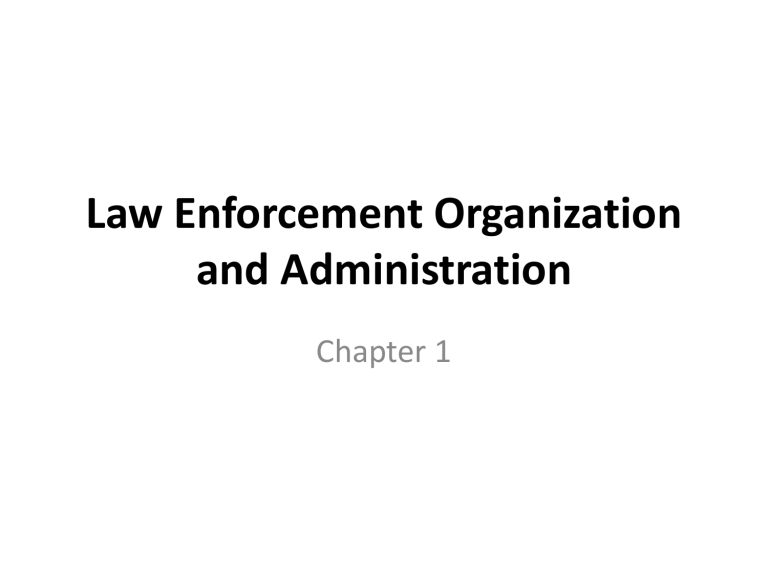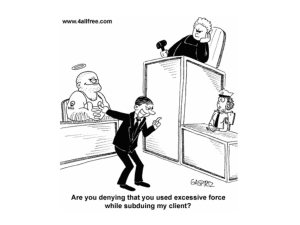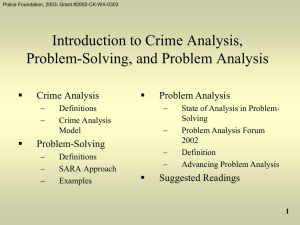Law Enforcement Organization and Administration

Law Enforcement Organization and Administration
Chapter 1
HISTORICAL PERSPECTIVE
Modern Day Law
Enforcement can be traced to the
Metropolitan Police in London, England, created in 1829.
Industrial Revolution
• Industrial Revolution in England caused a great surge of an uneducated and poorly trained population to migrate to London.
• This surge led to an increase in crime, chaos and poverty.
• These problems led to a proliferation of private and special police forces that served the needs of the diverse interest groups needing protection.
• British Home
Secretary Sir Robert
Peel lobbied British
Parliament to from a professional organized police force under government control.
Metropolitan Police Act
• Outlined the first duty manual to prevent crime and protect order.
• Established a police constabulary modeled into a para-military organization with a military style rank structure.
• Metropolitan Police model was a success and gradually extended to all parts of England and was exported to
America.
• Key component was local control
Traditional Management 1750 - 1900
• Concept of local control
– Each county or city having control of the local police or sheriffs department
• Department had Centralized Administration
– Control from top
– Limited decision making at the operational level
Pendleton Act
– Attempt to limit political influence by the creation of a Civil Service to hire and promote personnel
– Placed federal employees under a merit system in an attempt to reduce political interference
Scientific Management Model
1900 - Present
• Scientific Management – emphasis on efficiency, orderliness, and output.
– Division of labor
– Unity of Command and centralization of decision making
– One-way authority
– Narrow span of control
REFORMERS
O. W. Wilson
• Police Management Principals
– Professional police department divorced from politics
– Rigorous police personnel selection and training process
– Use of latest technology innovations available for law enforcement
O. W. Wilson
• Opposed civil service because it hampered police chiefs from selecting most qualified personnel in selection and promotion
• Organized police around
– Planning
– Activating
– Controlling
William H. Parker
• LAPD Chief 1950 -1966
– Implemented Scientific
Management in the LAPD
– Instituted probationary periods for new officers
– Developed a method of operation manual
– Implemented a research and development division
– LAPD became model for hiring standards, recruitment, training, and technology
HUMAN RELATIONS MODEL
1925 TO PRESENT
• Participative Management
– The Police Executive is a team leader
– Manager is first among equals
– People oriented humanistic approach
• Manager defines limits in which decisions can be made
• Manager and the group jointly make decisions with limits defined by organizational constraints
Behavioral Management
1945 to Present
Systems Management
1960 to Present
Management By Objectives
• Goal Orientated Philosophy and Attitude
• Focus on results, less concerned for method
• Program evaluation and review techniques
– Manner of determining goal achievement
• Planned programmed budgets
– Better identification of expenditures
– Tighter control of unit activities
• Organizational development
– Process of building a sound organizational structure
Community Policing
• Incorporates problem-solving policing, which attempts to solve specific crime problems in the community
Proactive Police Management
1980 to Present
Proactive Police Management
Focus Of The Text
• Objective of policing is crime prevention
• Strong commitment to community involvement
• Modern Bureaucracy
• Full Service Police Department with multispecialist teams
• Full use of modern communication
• Modern budgeting and accounting systems
• Crisis Management Planning
• Consultative Management
• Data Driven Department with full use of technology
• Emphasis on Operational Utility
INNOVATORS
WILLIAM BRATTON
• Instituted crime control planning program known as COMPSTAT (computer statistics) while he was
New York City Police
Commissioner
Lee P. Brown
• Instituted
Neighborhood Oriented
Police model in
Houston, Texas.
• Oriented police officer from enforcer of neighborhood beats to problem solver.











